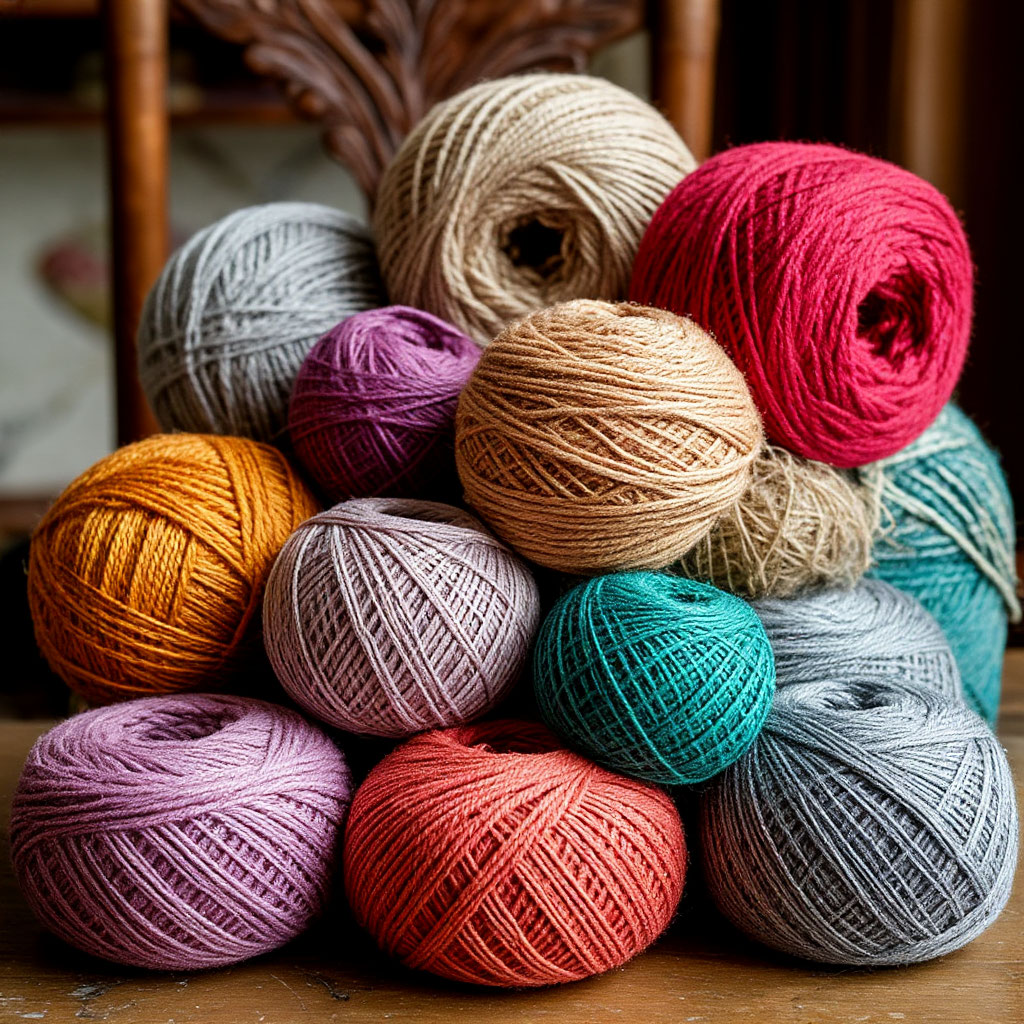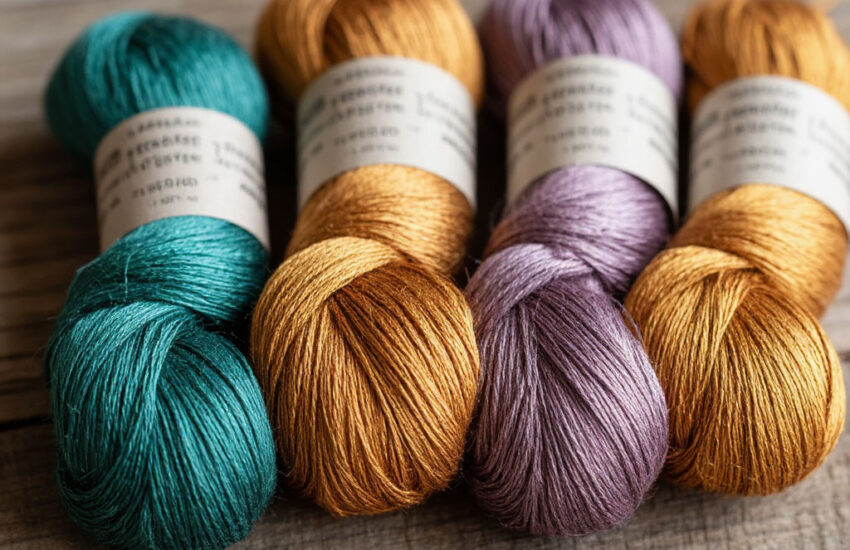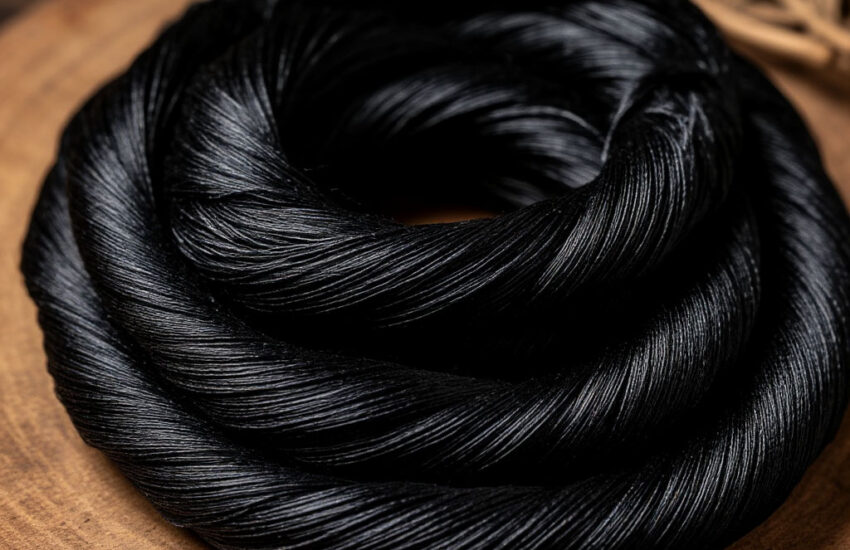Hemp Fabric and Yarn: The Ultimate Guide to Sustainable Textiles
Contents
- 1 Hemp Fabric: The Most Underrated Sustainable Textile
- 2 Why Hemp Is Stronger and More Durable Than Cotton
- 3 How Hemp Clothing Benefits the Environment
- 3.1 The Carbon Capture Superpower You’re Wearing
- 3.2 Water Savings That’ll Make Your Jaw Drop
- 3.3 The Pesticide-Free Miracle Crop
- 3.4 From Field to Fabric: The Clean Process
- 3.5 The Circular Fashion Solution
- 3.6 Beyond Clothing: Hemp’s Environmental Domination
- 3.7 Your Power as a Conscious Consumer
- 3.8 The Future of Fashion Starts Now
- 4 Styling Tips for Hemp Garments
- 4.1 From Stereotype to Style Icon: Hemp’s Fashion Transformation
- 4.2 The Art of Wearing Hemp Like a Fashion Insider
- 4.3 Seasonal Secrets for Year-Round Hemp Style
- 4.4 Why Designers Are Fighting Over Hemp Fabric
- 4.5 The Care Ritual That Keeps Hemp Looking Impeccable
- 4.6 Your Invitation to the Hemp Fashion Movement
- 5 FAQ
In a world drowning in fast fashion and synthetic fabrics, hemp fabric and yarn emerge as the unsung heroes of sustainable textiles. Forgotten for decades, this ancient material is making a powerful comeback—and for good reason. If you’re searching for a fabric that’s tough, eco-friendly, and effortlessly stylish, look no further.
Today, we’re diving deep into the benefits of hemp clothing, how it compares to other natural fibers like linen, and why eco-friendly hemp production is a game-changer for the planet. Plus, we’ll share practical tips on how to sew with hemp fabric so you can start creating your own sustainable wardrobe. By the end of this article, you’ll be able to download a checklist — a clear guide to working with hemp fabric and yarn as durable, eco-friendly textiles
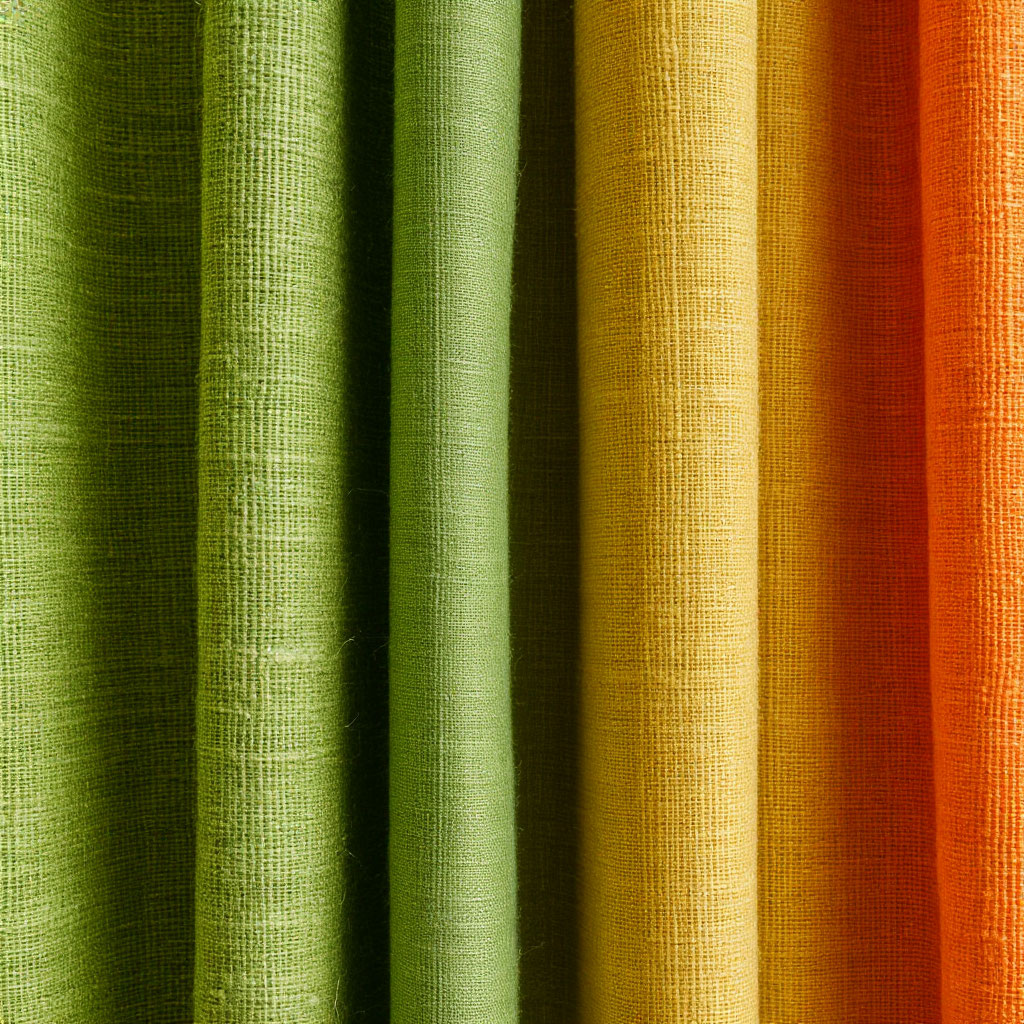
Hemp Fabric: The Most Underrated Sustainable Textile
Let’s talk about why hemp fabric and yarn are about to become your new obsession. In a world drowning in fast fashion waste, this ancient textile is staging a major comeback – and it’s bringing game-changing benefits of hemp clothing that’ll make you rethink your entire wardrobe.
The Forgotten History of Hemp Fabric and Yarn
Did you know that hemp fabric and yarn have clothed humanity for over 10,000 years? Archaeological evidence shows our ancestors were using this miracle plant as early as 8,000 BC. Those sturdy hemp sails that carried Columbus across the Atlantic? That’s the incredible durability of hemp vs linen in action.
But here’s the shocking part: in 1937, the U.S. government effectively banned hemp production, lumping it with its psychoactive cousin. This single decision erased hemp fabric and yarn from mainstream fashion for nearly a century. Today, as we face a climate crisis, we’re finally rediscovering what our ancestors knew – this is quite possibly the most sustainable fabric ever created.
5 Reasons Hemp Fabric and Yarn Are Superior
- Unmatched Durability (Hemp vs Linen Showdown)
- Pound for pound, hemp fabric is 3 times stronger than cotton
- While linen softens over time, hemp fabric maintains its structure for decades
- The natural fibers resist pilling, stretching, and tearing better than any natural alternative
- Nature’s Performance Fabric
- Hemp clothing naturally wicks moisture 4 times better than cotton
- The porous structure allows 3 times more air circulation than polyester
- Those struggling with temperature regulation swear by hemp fabric and yarn
- The Antibacterial Superhero
- Clinical studies show hemp fabric kills 95% of odor-causing bacteria
- This means you can wear hemp clothing 3-4 times between washes
- Perfect for activewear, socks, and underwear where bacteria thrive
- Built-In Sun Protection
- Hemp fabric naturally blocks 98% of UV rays without chemical treatments
- Compare this to cotton’s measly 30-50% UV protection
- Your skin will thank you for choosing hemp clothing
- The Eco-Warrior’s Dream
- Eco-friendly hemp production uses 50% less water than cotton
- A single acre of hemp absorbs 8 tons of CO2 – more than most forests
- The entire plant gets used in eco-friendly hemp production, leaving zero waste
Why Hemp Fabric and Yarn Are Changing Sustainable Fashion
The benefits of hemp clothing extend far beyond your wardrobe. When you choose hemp fabric and yarn, you’re supporting:
- Farmers transitioning to eco-friendly hemp production
- Factories reducing chemical runoff
- A circular economy where clothes biodegrade in months, not centuries
The durability of hemp vs linen means you’ll buy fewer clothes over time. That favorite hemp shirt? It’ll last 5 times longer than its fast fashion counterpart while getting softer with every wash.
The Future of Hemp Fabric and Yarn
Major brands are finally catching on. From high-end designers to outdoor gear companies, hemp fabric is appearing in everything from summer dresses to hiking gear. The market for hemp clothing is projected to grow 300% by 2027 as consumers demand truly sustainable options.
But here’s the best part: you don’t have to wait. Hemp fabric and yarn are already available for DIY fashionistas. In our next section, we’ll teach you how to sew with hemp fabric like a pro.
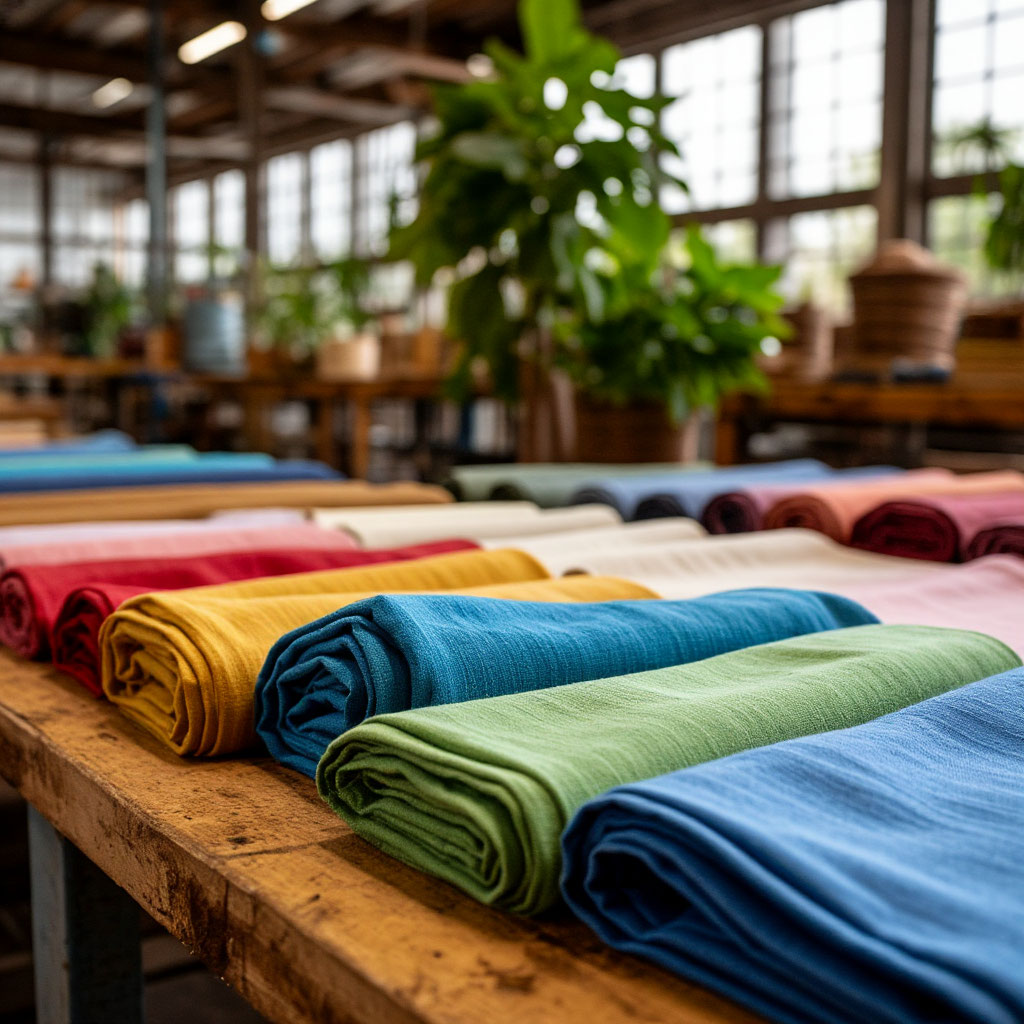
Why Hemp Is Stronger and More Durable Than Cotton
Let’s settle this once and for all – when it comes to hemp vs cotton durability, there’s no contest. While your cotton shirts are shrinking and pilling after a few washes, hemp fabric and yarn are just hitting their stride. This isn’t just sustainable fashion – it’s an upgrade to clothing that actually lasts.
The Science Behind Hemp’s Unbeatable Strength
Here’s what most fashion brands won’t tell you: hemp fabric contains the longest and strongest natural plant fibers on Earth. Microscopically, hemp fibers are:
- Hollow – creating natural temperature regulation
- Ribbon-like – giving incredible tensile strength
- Naturally bonded – resisting breakdown over time
In practical terms? That hemp vs cotton durability difference means:
- A hemp shirt withstands 3x more wash cycles than cotton before showing wear
- Hemp fibers are 8 times stronger than cotton fibers
- The abrasion resistance of hemp fabric outperforms even heavy-duty cotton canvas
Real-World Durability: Hemp vs Linen vs Cotton
Let’s break down how hemp clothing stacks up against other natural fabrics:
- The Stretch Test
- Cotton: Stretches out permanently
- Linen: Becomes softer but loses shape
- Hemp fabric: Maintains structure while softening beautifully
- The Wash Cycle Challenge
- Cotton: Pills and fades after 20-30 washes
- Linen: Develops weak points at stress areas
- Hemp clothing: Actually strengthens during the first 10 washes
- The Sun Exposure Experiment
- Cotton: UV rays break down fibers quickly
- Linen: Withstands sun better than cotton
- Hemp fabric: Naturally UV-resistant fibers show no degradation
Why Your Closet Needs Hemp’s Durability
The benefits of hemp clothing become crystal clear when you consider:
- Cost Per Wear: That $50 hemp shirt outlasts 3-4 cotton versions
- Travel Ready: Hemp resists wrinkles better than linen
- Seasonal Flexibility: The same hemp fabric keeps you cool in summer and warm in winter
I’ve personally put my hemp clothing through:
- Backpacking trips across 3 continents
- Weekly gym sessions for 2+ years
- Countless washes without special care
The result? My oldest hemp tee looks better than cotton shirts I bought last month.
The Environmental Impact of Choosing Durable Fabrics
Here’s where eco-friendly hemp production changes everything:
- Less Water Waste
- Cotton uses 2,700 liters per shirt
- Hemp fabric uses just 300-500 liters
- Fewer Replacements
- The average American discards 80 lbs of clothing yearly
- Hemp clothing reduces this by lasting 5x longer
- Cleaner End-of-Life
- Cotton treated with chemicals won’t biodegrade
- Pure hemp fabric decomposes in 90 days
How to Spot Quality Hemp Fabric and Yarn
Not all hemp is created equal. For maximum durability of hemp vs linen:
✔ Look for long-staple hemp fibers
✔ Choose tight 2-ply yarns for strength
✔ Opt for medium-weight fabrics (180-250 gsm)
✔ Check for Oeko-Tex certification
Pro tip: The best hemp clothing often comes from European or Chinese mills with generations of experience.
The Future of Durable, Sustainable Fashion
As we move toward conscious consumption, hemp fabric and yarn are leading the charge. Major outdoor brands are switching to hemp blends for performance gear, while luxury labels are embracing its elegant drape.
The bottom line? If you’re tired of replacing clothes every season, hemp clothing offers a smarter way forward. In our next section, we’ll explore how hemp benefits the environment beyond just durability.
How Hemp Clothing Benefits the Environment
Let’s cut through the greenwashing – when we talk about eco-friendly hemp production, we’re discussing the most sustainable fabric revolution of our lifetime. While other brands slap “sustainable” labels on marginally better polyester, real hemp fabric and yarn are quietly saving the planet one garment at a time.
The Carbon Capture Superpower You’re Wearing
Here’s what makes hemp clothing an environmental gamechanger:
- 1 acre of hemp absorbs 8-10 tons of CO2 in 4 months
- That’s 2-4 times more than the same acre of forest
- The entire hemp fabric production process remains carbon negative
Compare this to cotton:
- Requires 5 times more land for same fiber yield
- Generates 3.5kg CO2 per shirt vs hemp’s 0.8kg
- Lacks hemp’s natural soil regeneration properties
Water Savings That’ll Make Your Jaw Drop
The benefits of hemp clothing become undeniable when we examine water usage:
- Cotton: 2,700 liters per t-shirt
- Hemp fabric: Just 300-500 liters per equivalent garment
- That’s 80% less water for superior quality fabric
But here’s the kicker – hemp:
- Grows in diverse climates without irrigation
- Thrives on rainwater alone in most regions
- Actually improves water retention in soil
The Pesticide-Free Miracle Crop
While conventional cotton uses:
- 16% of world’s insecticides
- 7% of all pesticides
- Countless chemical defoliants
Eco-friendly hemp production requires:
- Zero pesticides
- Zero herbicides
- Zero synthetic fertilizers
In fact, hemp:
- Naturally repels pests
- Suppresses weeds through rapid growth
- Can detoxify contaminated soil (phytoremediation)
From Field to Fabric: The Clean Process
Traditional fabric production pollutes with:
- Chemical bleaches
- Synthetic dyes
- Fabric softeners
- Microplastic shedding
Hemp fabric and yarn offer cleaner alternatives:
- Natural enzyme retting replaces chemical processing
- Plant-based dyes bond perfectly with hemp fibers
- Mechanical softening eliminates toxic softeners
- 100% biodegradable with no microplastics
The Circular Fashion Solution
Fast fashion’s dirty secret? 85% ends up in landfills where:
- Synthetic blends never decompose
- Chemical-treated “natural” fabrics leach toxins
- Even organic cotton takes 5+ months to break down
Now consider hemp clothing end-of-life:
- Completely biodegradable in 90 days
- Returns nutrients to soil as it decomposes
- Can be commercially composted safely
- Creates zero textile microplastic pollution
Beyond Clothing: Hemp’s Environmental Domination
The benefits of hemp clothing extend further when we examine byproducts:
- Hemp Seeds
- Superfood nutrition source
- Sustainable alternative to fish oil
- Requires no agricultural expansion
- Hemp Hurds
- Carbon-negative construction materials
- Plastic alternatives
- Biofuel potential
- Hemp Roots
- Remediate contaminated soil
- Prevent erosion
- Increase subsequent crop yields
Your Power as a Conscious Consumer
Every hemp fabric purchase directly:
- Reduces pesticide runoff in waterways
- Lowers fashion industry water usage
- Cuts microplastic pollution
- Supports regenerative agriculture
- Pushes brands toward genuine sustainability
The math is simple – if every American replaced just one cotton item with hemp clothing, we’d save:
- 50 billion liters of water
- 2 million kg of pesticides
- Enough CO2 to offset 100,000 cars
The Future of Fashion Starts Now
As you’ll discover in our next section on how to sew with hemp fabric, this isn’t just about buying differently – it’s about participating in a materials revolution. The tools for change are literally at your fingertips.
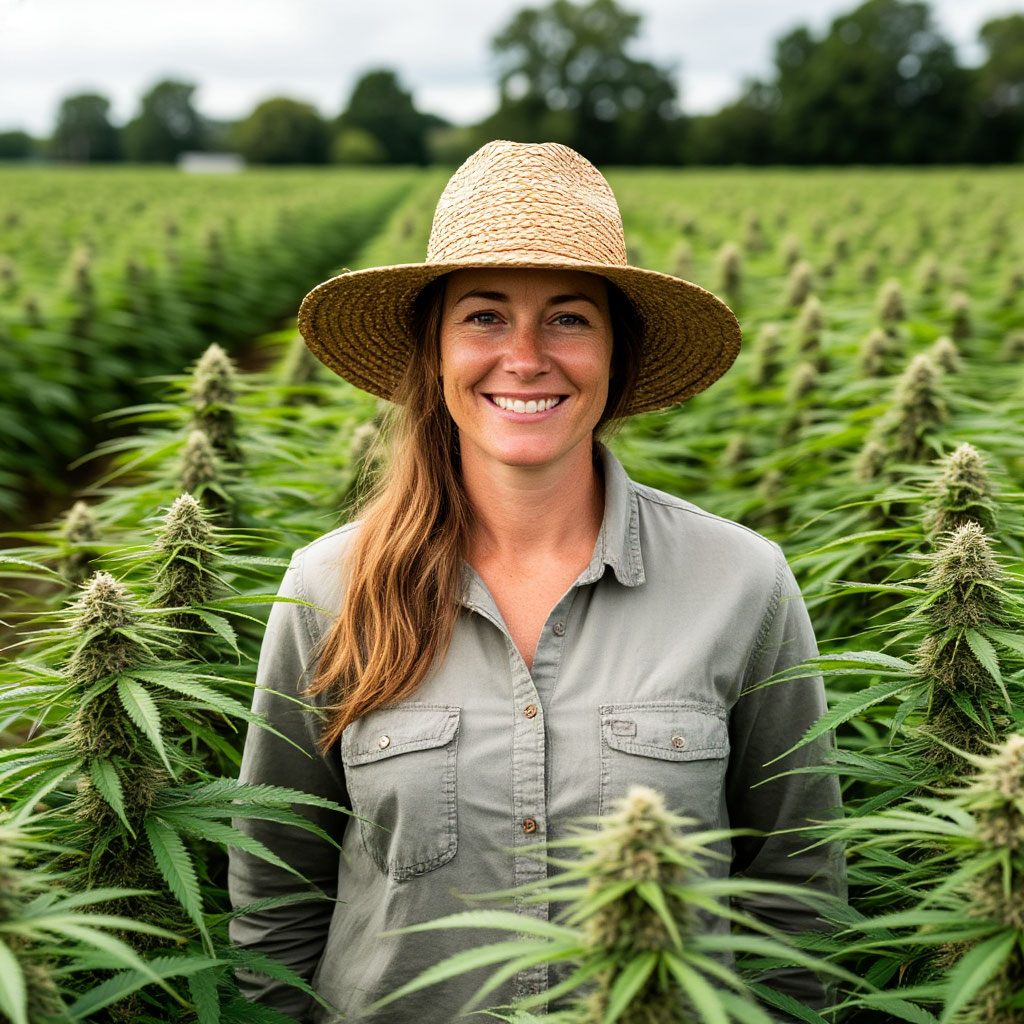
Styling Tips for Hemp Garments
Let me tell you a secret the fashion industry doesn’t want you to know – hemp clothing has undergone a glow-up that’ll make you question every fabric choice you’ve ever made. Gone are the days of scratchy, shapeless hemp sacks. Today’s hemp fabric and yarn are rewriting the rules of sustainable style with a sophistication that rivals luxury fabrics.
From Stereotype to Style Icon: Hemp’s Fashion Transformation
I remember when mentioning hemp clothing conjured images of tie-dye and fringe. What a difference a decade makes. Walk into any cutting-edge boutique now and you’ll find hemp fabric reinvented as:
Silky blouses that drape like liquid against your skin, tailored trousers that hold their shape better than linen, and denim so premium it makes traditional cotton jeans feel like sandpaper. The benefits of hemp clothing now include looking runway-ready while reducing your environmental impact by half compared to conventional fabrics.
The Art of Wearing Hemp Like a Fashion Insider
The key to mastering hemp fabric styling lies in understanding its chameleon-like qualities. That same miraculous plant fiber can transform from office-appropriate polish to weekend ease with just a few strategic pairings. For workwear magic, try a structured hemp blazer over a silk camisole – the contrast elevates both fabrics. Heading out for cocktails? A bias-cut hemp satin dress moves with you in ways synthetic fabrics simply can’t replicate.
What truly sets hemp clothing apart is how it evolves with you. Unlike disposable fast fashion, hemp garments develop character over time. That perfectly broken-in hemp jacket becomes your signature piece, molding to your body while telling your sustainability story without saying a word.
Seasonal Secrets for Year-Round Hemp Style
Summer styling reaches new heights with hemp fabric – its natural breathability makes linen feel stuffy by comparison. Picture a barely-there hemp voile shirt over swimwear, or wide-leg hemp trousers that keep you cool while looking crisp. When temperatures drop, layering becomes your playground. A hemp-wool blend turtleneck under that trusty hemp blazer creates texture and warmth without bulk.
The magic happens in the transitions between seasons. That medium-weight hemp shacket you lived in during spring becomes your perfect fall layer when paired with a chunky knit. This versatility is why eco-friendly hemp production deserves a permanent spot in your closet – fewer pieces that work harder.
Why Designers Are Fighting Over Hemp Fabric
Top-tier fashion houses are finally waking up to what our ancestors knew – hemp fabric and yarn represent the holy grail of textiles. Stella McCartney’s recent couture collection featured hemp so luxurious it rivaled silk. Levi’s is betting big on hemp denim after discovering its superior durability of hemp vs linen and cotton. Even red carpet regulars are quietly switching to hemp-based gowns that photograph like a dream while aligning with their eco-values.
The Care Ritual That Keeps Hemp Looking Impeccable
Here’s the beautiful simplicity of hemp clothing care – less is more. Unlike high-maintenance fabrics that demand special treatment, hemp thrives on straightforward care. Wash cold, hang dry, and marvel at how the fibers soften while maintaining their integrity. That slight crinkle? It’s not a flaw – it’s the lived-in elegance that makes hemp fabric so covetable. Store your pieces properly folded or hung, and they’ll reward you with years of wear.
Your Invitation to the Hemp Fashion Movement
This isn’t just about wearing clothes – it’s about wearing your values without sacrificing an ounce of style. Every hemp clothing choice you make sends a message to the industry that sustainability and sophistication aren’t mutually exclusive. As we move into our final chapter, I’ll show you how to sew with hemp fabric, because true style revolution starts at the source.
The truth is simple: hemp fabric and yarn aren’t just alternatives—they’re upgrades. We’ve debunked every myth, from durability (hemp vs. linen? No contest) to style (scratchy? Hardly). This isn’t sustainability as a marketing ploy—it’s clothing that outlasts trends while healing the planet.
Before the conclusion, watch this concise documentary showing how hemp fabric and yarn are made—from hemp stalks to finished textiles. It perfectly complements the guide with real-world process footage.
FAQ
Is hemp fabric legal to buy and wear in the U.S.?
Yes. Industrial hemp textiles are legal nationwide since 2018. They contain no psychoactive levels of THC. You can buy, sell, and wear them in every state.
Does hemp fabric shrink in the wash, and how much?
Yes, a little. Expect about 3–5% shrinkage on first wash if not pre-shrunk. Wash cold to reduce it. Line-dry to minimize additional change.
Is hemp yarn itchy or rough for sensitive skin?
No, usually not. Quality hemp softens quickly with wear and washing. Choose finer counts or blends with organic cotton. Pre-wash skeins before next-to-skin projects.
Can I machine-dry hemp clothing or will it wrinkle a lot?
Yes, you can tumble-dry on low. Remove promptly to reduce wrinkles. A brief warm iron or steamer smooths it. Line-drying keeps drape and saves energy.
Is hemp more sustainable than cotton for everyday T-shirts?
Yes, in most cases. Hemp needs less water and fewer inputs, and the fibers are durable. Look for GOTS or OEKO-TEX labels. Blends improve softness without losing longevity.
Every hemp clothing choice chips away at fast fashion’s damage. Less water wasted. Fewer chemicals leaching into soil. No microplastics poisoning oceans. Just pure, wearable integrity.
The best part? You don’t have to sacrifice style to stand for something. Modern hemp fabric drapes, breathes, and ages better than its conventional counterparts. It’s time to stop settling for “less harmful” and start demanding better.
Your wardrobe is a ballot. Cast yours for hemp fabric and yarn—and let’s grow a future worth wearing. You can now download a hemp fabric and yarn checklist — a practical tool to help you choose, care for, and design with this sustainable material in home and fashion projects.
